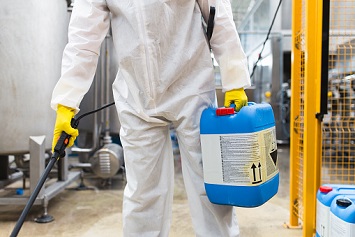Inclusion of first-aid statements on pesticide labels is governed by regulations at 40 CFR 156.68. The fundamental requirement is that all pesticides that have “systemic effects in Category I, II, or III, or skin or eye irritation effects in Category I or II” must bear a first-aid statement. (Category I pesticides have high toxicity; Category II pesticides have moderate toxicity; and Category III pesticides have low toxicity.) But the regulatory language at Section 156.68(d) specific to the location of first-aid statements has caused confusion among pesticide registrants, particularly with regard to the word “panel.”
In a February 2018 notice, the Agency attempted to clarify the requirement. Section 156.68(d) states:
“First aid statement. Location of first aid statement. The first aid statement must appear on the front panel of the label of all products assigned to Toxicity Category I by any route of exposure. Upon review, the Agency may permit reasonable variations in the placement of the first aid statement if a reference such as ‘See first aid statement on back panel’ appears on the front panel. The first aid statement for products assigned to Toxicity Categories II or III may appear on any panel of the label.”
Market Container Labels Not Reviewed
In its notice, the EPA explains that while it reviews and approves pesticide labeling, it generally only reviews a master label that contains all information that may be found on labeling. Master labeling may specify how labeling elements will be presented in the marketplace but often does not.
“The Agency does not routinely review the versions of labels as they appear on containers in the marketplace, nor are these container labels currently posted to the Agency’s Pesticide Product Label System (PPLS) site,” says the EPA. “The labels that are posted to the PPLS are master labeling in Adobe Acrobat Portable Document Format (PDF). Pesticide container labels are reviewed by some states.”
Panels—Front, Back, Side, and Inside
Based on comments received on a draft of the February 2018 notice and the wide reliance by the regulated community on the interpretation that “any panel” includes inside panels, the Agency states that it will not require Toxicity Category II and III products to bear the first-aid statements on a visible front, back, or side panel.
Additionally, in the notice, the Agency includes a number of recommendations for registrants to consider when printing their container labels:
- For Toxicity Category I products, the EPA strongly recommends that registrants consider placing duplicative first-aid language on the very back page of the booklet/accordion/saddle stitch label that is immediately stuck to the container in case the booklet/accordion/saddle stitch label is accidentally removed.
- Regardless of whether a registrant chooses to place the first-aid statements for Toxicity Category II and III products on a visible front, back, side, or inside panel, it is recommended that duplicative first-aid language appear on the very back page of the booklet/accordion/saddle stitch label that is immediately attached to the container in case the booklet/accordion/saddle stitch label is accidentally removed. This recommendation is not intended to suggest other information that registrants typically include on the very back page should be moved elsewhere.
- The Agency recommends that the registrant community consider designing new booklets/accordion/saddle stitch labels that are not easily removed from the containers. Per 40 CFR Part 156.10(a)(4), the labels are to be “securely attached” to the immediate container of the pesticide product. However, the Agency believes that in many instances, these labels are easily removed, which is why many registrants have already chosen to put the duplicative first-aid statements on the very last page (as recommended above) of the label that is attached to the container.
Securely Attached to Container or Wrapper
The Agency also refers registrants to Chapter 3—“General Labeling Requirements”—of its Label Review Manual (March 2018, revised). Regarding label placement, the chapter states:
“The label must appear on or be securely attached to the immediate container of the pesticide product. ‘Securely attached’ means that a label can reasonably be expected to remain affixed during the foreseeable conditions and period of use. If the immediate container is enclosed within a wrapper or outside container through which the label cannot be clearly read, the label must also be securely attached to such outside wrapper or container if it is part of the package as customarily distributed or sold. 40 CFR 156.10(a)(4)(i). Requirements for label placement on tank cars and other bulk containers during transport and storage are described in 40 CFR 156.10(a)(4)(ii).”

